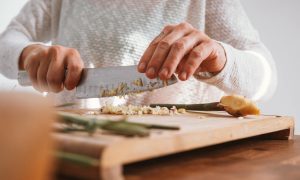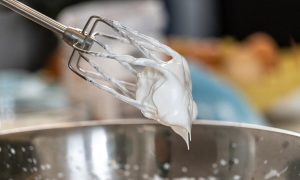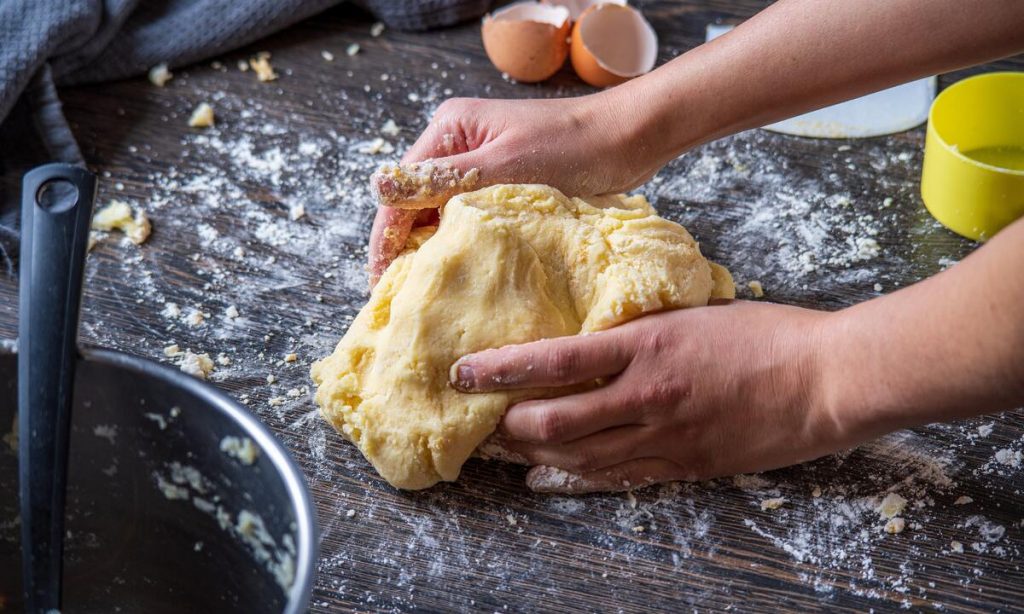For newbie and seasoned home cooks alike, seeing a cooking term in a recipe that you’re not familiar with can be confusing and sometimes off-putting. Today, we’ve put together some of the most common cooking terms and what they actually mean, so that you will never be stopped from trying out a new recipe again!
Cooking

Al dente
When pasta is cooked to just firm!
Dice
This refers to cutting ingredients, most often vegetables like carrots or onions, into square pieces that are uniform in size. The purpose of dicing is to make sure that the ingredient cooks evenly, as the uniform size of the pieces means that heat and flavours will be distributed the same way amongst all the pieces.
Mince
Mincing refers to cutting an ingredient into the smallest pieces possible, and is most often used for ingredients that add flavour like garlic or herbs. To mince something, rock your knife back and forth over the ingredient until it is very fine.
Sweat
To sweat is to cook something without adding colour, which is what makes it different to browning or sautéing. To sweat an ingredient is essentially to draw out moisture, so it is done on a medium to low heat with only a little bit of fat to help the ingredient not stick to the pan.
Sauté
Sautéing means cooking your ingredients over a high heat in a small amount of fat. Sautéing helps to add colour to your food and brings out delicious flavours and aromas.
Sear
Generally only used in reference to meat, to sear something is to brown the outside over a very high heat. This is thought to help seal in the juices of a cut of meat.
Blanch
This is a great way to cook veggies if you want them to remain vibrant and not soggy (the way boiled vegetables often are). Blanching involves bringing a pot of salted water to the boil, and then placing your ingredient into the water for a short amount of time. It is also recommended to put your food straight into an ice bath after blanching to stop the cooking process.
Chiffonade
To cut leafy vegetables into thin, ribbon-like strands.
Deglaze
Deglazing means lifting all of the caramelised bits left at the bottom of a pan by adding liquid. These caramelised bits and juices left after cooking meat or veggies is called the fond, and it can help add a lot of flavour to your dish.
Braise
To braise is to first sear a large cut of meat and then cover it with a small amount of liquid and cook it on low until it is incredibly tender.
Broil
Broiling is slightly different to baking, as it refers to cooking only the top of the food at a very high heat. It is done in the oven, and is often used to add colour to a crust or caramelisation to a pan of vegetables.
Simmer
Different to boiling, simmering is much more gentle and is often used for soups or sauces. Simmering refers to when a liquid is just below boiling point, and as such there are some bubbles forming but there is not as much movement in the pot as when it is at a rolling boil.
Spatchcock
To split poultry by removing the backbone so you can flatten it, resulting in crispier skin and quicker cooking.
Truss
To tie whole poultry with string or skewers in order to ensure even cooking.
Baking

Cream
This refers to mixing sugar and butter together until they are fully incorporated and you can no longer see grains of sugar. Creaming is done by mixing either by hand or with an electric mixer until the butter-sugar mixture is fluffy and very pale in colour.
Fold
Folding means combining two ingredients while trying to maintain as much air as possible. This is generally used when adding something light, such as whipped egg whites, to something heavier. Fold by moving a spatula in a gentle, over-under motion, scraping the sides of the bowl regularly.
Sift
To sift is to pass dry ingredients through a mesh in order to get rid of lumps and impurities as well as incorporate air into the ingredient, giving a lighter texture to the final baked product.
Cut in
This is a technique of adding fat to dry ingredients, and is most often used for pastries or scones. Use a pastry cutter (or two forks or knives if you don’t have one) to cut fat like butter or shortening into flour until the mixture forms fine crumbs.
Knead
To knead is to manipulate dough by pushing and folding it until it becomes smooth and elastic rather than rough and sticky.
Proof
This refers to allowing yeasted dough to rest and rise. Often, proofing is used to refer to the final rise of the dough before you cook it in the oven.
Whip
Whipping means rapidly stirring or beating in order to add air to an ingredient and is often used for cream or egg whites. This helps add volume and make something light and fluffy.
Water bath
A water bath can help ensure even and slow cooking, and is often used for custards, soufflés or cheesecakes. To make a water bath, fill an oven tray with water then place what you are baking into a smaller tray and place them onto the water-filled tray.
Blind bake
Blind baking is partially cooking a crust or pastry before adding the filling and baking it fully. Some crusts can be blind baked as is, after being pricked with a fork to allow air to escape, and some need to be weighed down by pastry weights or dried beans in order to help them keep their shape.
Macerate
This is a technique that refers to using sugar to draw out the juices of fresh fruit and soften it. To macerate fruits like fresh berries, either sprinkle them with sugar or soak them in liquids like juice or alcohol.
Did you like this article? Follow us @foodandhomesa on Instagram for more!
READ MORE: 20 common ingredient substitutions
Featured image: Anton Via Unsplash

